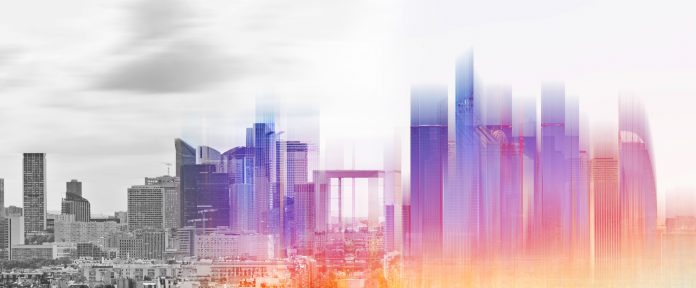The concept of digital twins is not new. However, the advance of the ‘fourth industrial revolution’ is making cyber-physical systems in the built environment practical, useful and affordable
With IDC estimates that digital twins could deliver innovation and productivity gains for G2000 companies of up to 25%, it could be promising news for the construction industry – particularly bearing in mind the $1.6tn global productivity shortfall we as an industry need to tackle.
Productivity gains and cost savings aside, digital twins will also become an essential tool in addressing the current climate crisis, presenting dramatic and exciting opportunities to achieve zero carbon targets and promote sustainable, healthier buildings.
Tackling environmental impacts, not only at the individual building level, but on a larger scale (as we are doing here at IES with our latest ICL technology) will accelerate progress towards decarbonisation and be critical in gaining ground in the ‘race of our lives’.
What are digital twins and how are they currently used?
It is characterised as a virtual replica of a physical object and the connection of the two via sensors transmitting real time data. They are used to optimise operation by facilitating monitoring, diagnostics and prediction. By combining sensor data with historical data, human expertise and simulation learning we can use digital twins to gain valuable, and otherwise unseen, insights into what’s happening ‘under the hood’.
Digital twins are already deeply embedded within many industries, none perhaps more so than in manufacturing. Here sensors are placed to collect data on a range of factors including environmental conditions and the characteristics of equipment throughout the production line. The Internet of Things (IoT) brings more affordable and advanced ways of managing assets and processes to enhance maintenance and management, closing the digitalisation loop and allowing equipment to predict problems before they arise. This can lead to performance improvement, greater customer satisfaction and increased productivity.
Elsewhere, Formula 1 teams have long used the technology to secure that all important millisecond advantage, using simulations to identify minor adjustments which will ensure their cars achieve the best performance possible. While NASA have used similar pairing technologies as far back as the 1960s and 70s to simulate physical assets in space, allowing them to operate, maintain and repair their systems remotely.
Digital twins in the context of the built environment
Unfortunately, the construction industry is yet to catch up with other industries in the use of digital twins. Indeed, many decisions are navigated based on design assumptions and construction documents, not altogether unlike a driver who has a long journey to make with only some knowledge of the route and an out of date map.
However, as we move forward, through the application of twin technology we could liken the process much more to that of a driver with a state of the art Sat Nav who has the advantage of continuously updated route information as they complete their journey. With the correct application of a live twin it will become possible to collate all of the information relevant to the success of a project during its design, construction and throughout its operational life, while powerful computing would synthesise the data to provide clear guidance to every stakeholder involved at any given moment in the asset’s life.
IES firmly believes that digital twins should not just be about creating glossy 3D visualisations. To have any real impact, the technology needs to respond and behave exactly like its physical counterpart in order to produce accurate simulations and have confidence in your analysis outputs. That is why IES’ twins use a unique combination of AI, machine learning and physics based simulation to make real-time performance optimisation of built environment assets and the many other benefits become a reality.
Characteristics
One important characteristic of digital twins is the homogenisation of data, i.e. capturing, storing and utilising different types of data in the same digital form. They can also be reprogrammed via remote adjustments or automatically using artificial intelligence and predictive analytics to improve performance. A simple example of this would be a lightbulb which would know how many hours it has run and therefore, based on typical usage patterns, know when it will need to be replaced. This intelligent predictive maintenance approach can in turn alleviate some of the burden on building or estate management teams.
The scale of opportunity is huge. However, one of the largest opportunities for the built environment is to optimise urban sustainability by creating a virtual replica of any city or community. Operators can develop different strategies to deal with people and traffic movement as well as energy, water and waste management. Singapore and Jaipur are already implementing digital twins in this manner and it will only be a matter of time before many more cities and communities follow suit.
Want to find out more?
Join IES on 16 October for a free faculty webinar where Dr Sarah Graham will be delving deeper into the subject of twin technology and their applications within the built environment. Register for your free space now!
Dr Sarah Graham
Consultant
ICL team at IES

















